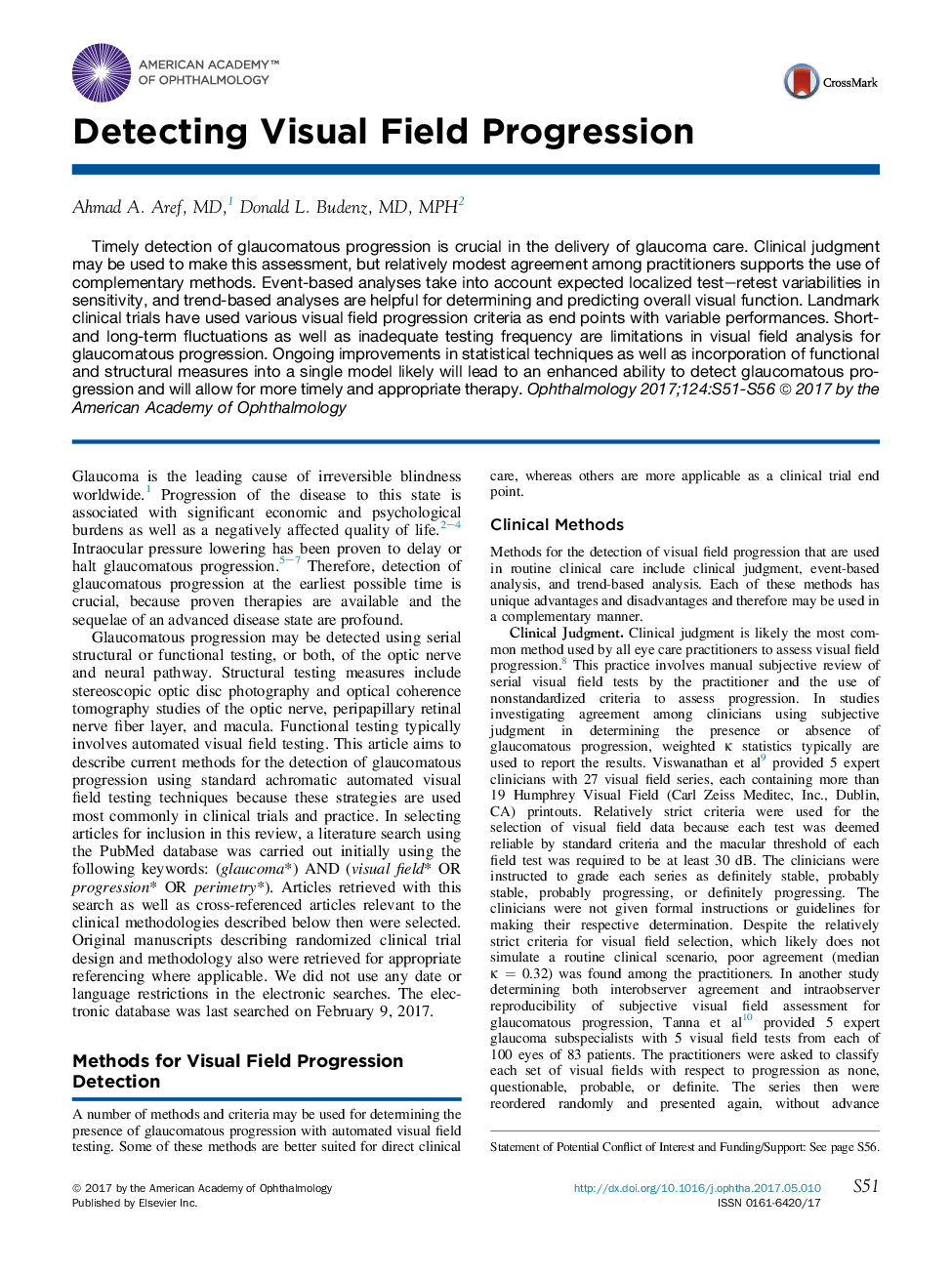| Article ID | Journal | Published Year | Pages | File Type |
|---|---|---|---|---|
| 8794342 | Ophthalmology | 2017 | 6 Pages |
Abstract
Timely detection of glaucomatous progression is crucial in the delivery of glaucoma care. Clinical judgment may be used to make this assessment, but relatively modest agreement among practitioners supports the use of complementary methods. Event-based analyses take into account expected localized test-retest variabilities in sensitivity, and trend-based analyses are helpful for determining and predicting overall visual function. Landmark clinical trials have used various visual field progression criteria as end points with variable performances. Short- and long-term fluctuations as well as inadequate testing frequency are limitations in visual field analysis for glaucomatous progression. Ongoing improvements in statistical techniques as well as incorporation of functional and structural measures into a single model likely will lead to an enhanced ability to detect glaucomatous progression and will allow for more timely and appropriate therapy.
Keywords
Related Topics
Health Sciences
Medicine and Dentistry
Ophthalmology
Authors
Ahmad A. MD, Donald L. MD, MPH,
